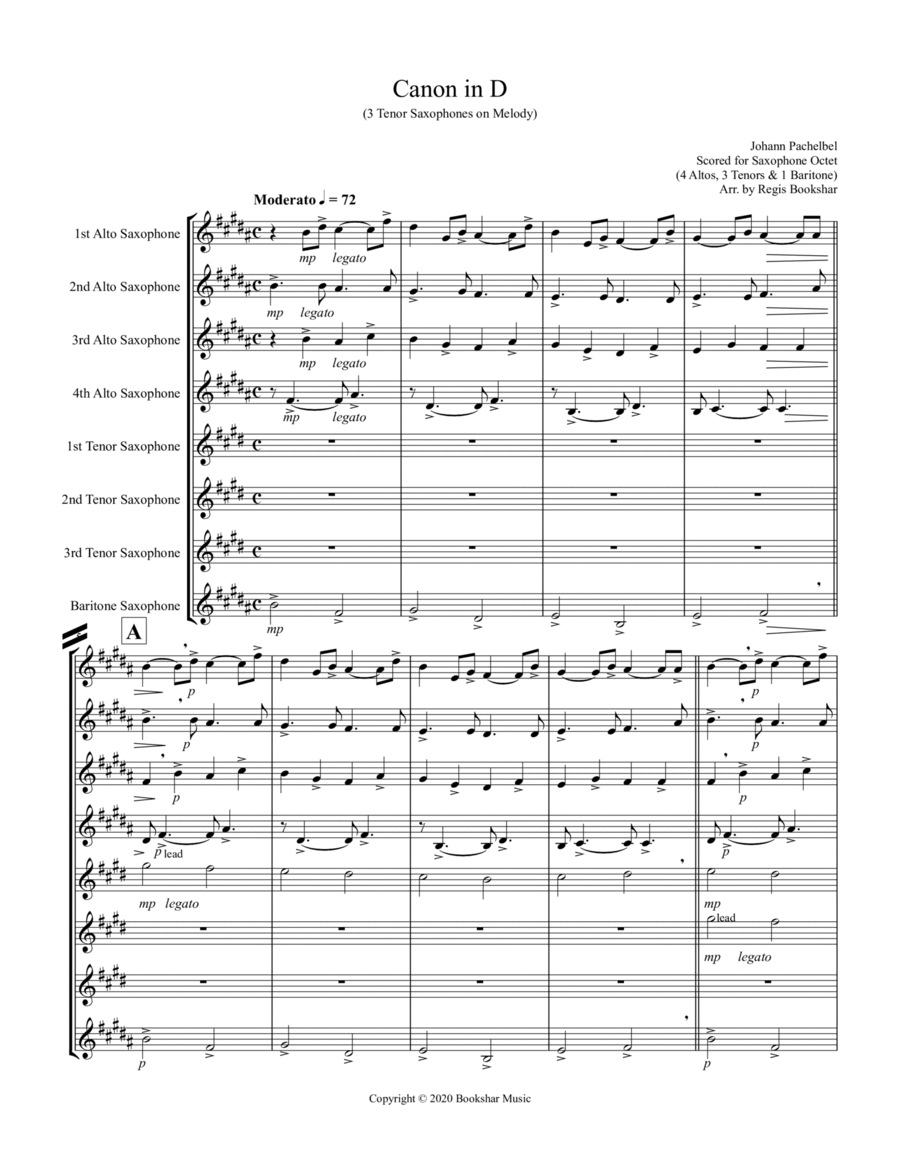Saxophone Ensemble,Woodwind Ensemble Alto Saxophone,Baritone Saxophone,Tenor Saxophone - Level 4 - Digital Download SKU: A0.813491 Composed by Johann Pachelbel. Arranged by Regis Bookshar. Baroque,Multicultural,Standards,Wedding,World. 36 pages. Regis Bookshar #6266459. Published by Regis Bookshar (A0.813491). Canon in D (Pachelbel) (D) (Saxophone Octet - 4 Alto, 3 Tenor, 1 Bari) - Advanced/Intermediate - Digital Download. This selection, Johann Pachelbel's celebrated Canon in D, is perhaps the most famous canon ever written and has been one of my favorite compositions to arrange. A canon is a polyphonic device in which several voices play the same music, entering in sequence. Pachelbel's Canon in D, was originally written in the key of D Major and was scored for three violins arranged in canon, accompanied by a basso continuo which repeats the same harmonic progression throughout the entire piece. The common musical term for this is ostinato or ground bass. Regis Bookshar has now arranged this music for a Saxophone Octet consisting of 4 Alto Saxophones, 3 Tenor Saxophones and 1 Baritone Saxophone. The three Tenor Saxophones play the melody in canon while the ostinato accompaniment is played by the other five instruments. This arrangement is suitable for high school and college students but could also be performed by professional performers. It is perfect for concerts and church services, especially for Weddings, but could be performed for any occasion. Included are a score and a complete set of parts (36 pages). This version is written in the key of D Major, as is the original version, but, if you prefer, another version, written in the key of Bb Major, to make it a little easier for some younger performers, is also available. Other versions of Pachelbel's Canon in D have also been arranged by Regis Bookshar and are available for a wide variety of instrumental Quintets and Octets, in both the keys of D Major and Bb Major. I think that String players would probably prefer to play the versions in the key of D Major while the Brass and Woodwind musicians might prefer to play the Bb Major versions. I hope you take the time to compare the different versions to find the right version for you. To help you decide which version, or versions, you may want to choose, I have included several musical samples for you to listen to and to hear what these arrangements may sound like and so that you may compare the various arrangements. Also, just to let you know, the Octets written in the key of Bb Major have full-length recordings while the Octets in D Major and all Quintets have only the first 25 measures, or so, available to hear. Please feel free to search for other arrangements by Regis Bookshar which are also available. There are quite a few other arrangements in a variety of styles and I'm certain you will find something else which might interest you as well. Please keep checking because I plan to continue to add new arrangements as often as I can. I'm certain that this exciting arrangement of Pachelbel's Canon in D will be a challenge to some performers but will continue to entertain both performers and audiences alike for years to come.
